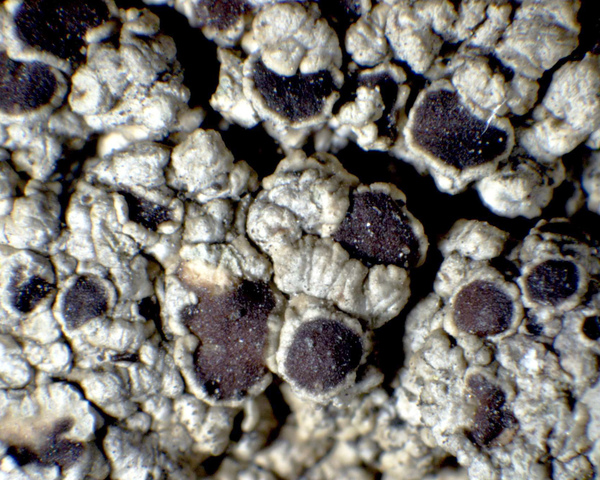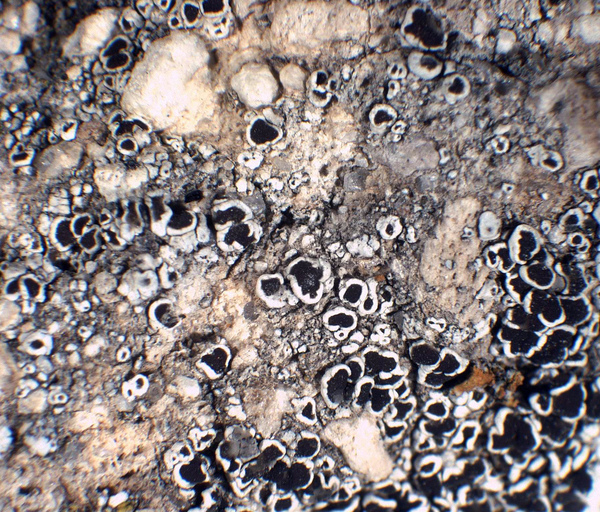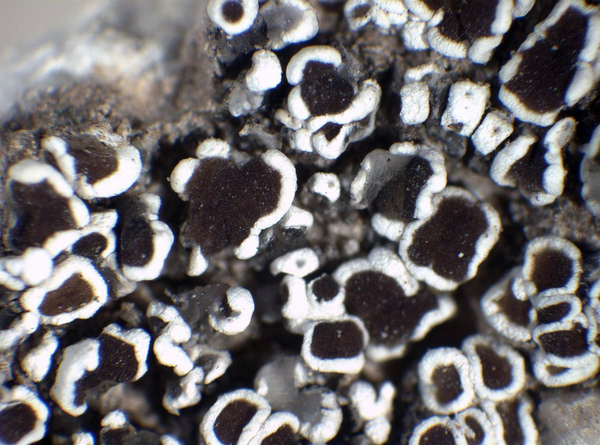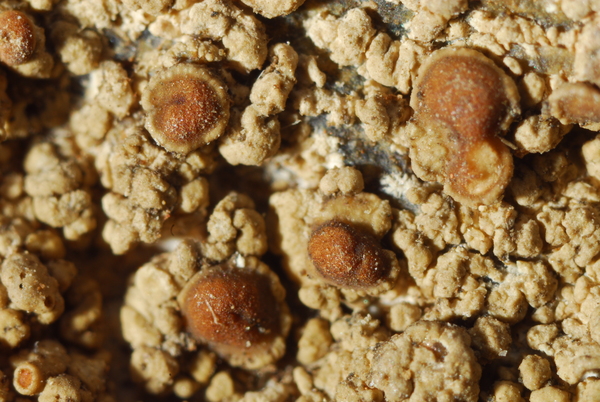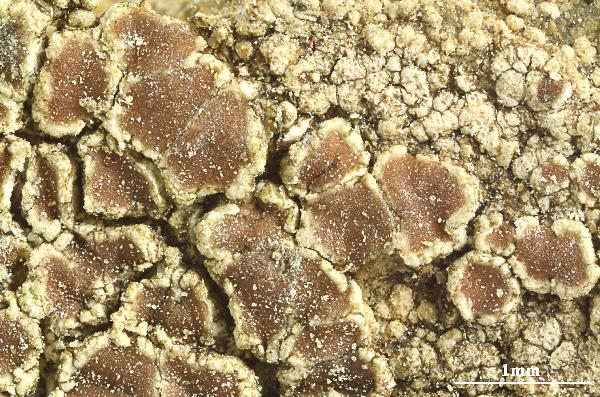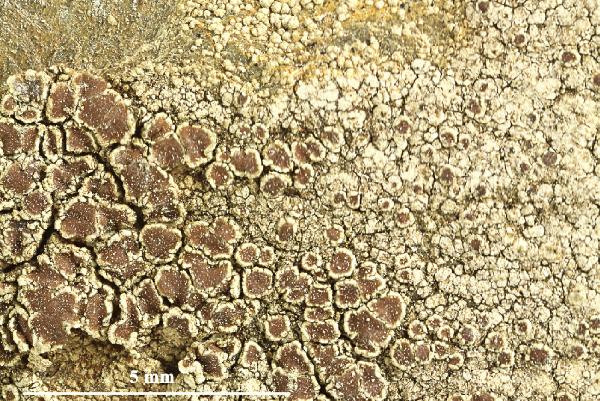Lecanora pseudistera Nyl.
Flora, 55: 354, 1872.
Synonyms: Lecanora atrofusca B. de Lesd.; Lecanora atrofusca var. coalescens Maheu & Werner; Lecanora clauzadei B. de Lesd.; Lecanora ripartii sensu Poelt non Lamy; Lecanora rubrofusca B. de Lesd.; Parmularia sbarbaronis B. de Lesd.
Distribution: N - VG, TAA, Lomb, Piem, VA (Piervittori & Isocrono 1999), Lig (Lumbsch 1994). C - Tosc, Laz, Sar (Rizzi & al. 2011). S - Cal (Puntillo 1996).
Description: Thallus crustose, episubstratic, verrucose-areolate or dispersed-areolate, sometimes subsquamulose, yellowish white, whitish grey or grey, smooth, epruinose, without a prothallus. Apothecia lecanorine, sessile, 0.4-1.5 mm across, with a red-brown, often glossy, flat to convex, epruinose disc and a persistent, smooth, entire or flexuose thalline margin; a parathecial ring is sometimes also visible. Thalline exciple corticate, the cortex 12-25 µm thick, the medullary part with a few large crystals insoluble in K; proper exciple colourless, with crystals soluble in K; epithecium red-brown to orange-brown, without crystals, the pigment not dissolving in K; hymenium colourless; paraphyses simple or sparingly branched in upper part, the apical cells up to 4.5 µm wide; hypothecium colourless, not inspersed with oil droplets. Asci 8-spored, clavate, very thin-walled, with a K/I+ blue, tall tholus penetrated by a faintly amyloid apical cushion, the wall K/I-, surrounded by a blue outer layer, Lecanora-type. Ascospores 1-celled, hyaline, ellipsoid, (8-)10-13.5(-14.5) x 5-8 µm, the wall <1 µm thick. Pycnidia immersed, cerebriform. Conidia thread-like, 15-18 µm long. Photobiont chlorococcoid. Spot tests: K+ yellow, C-, KC-, P- or P+ pale orange. Chemistry: atranorin (major), chloroatranorin (minor), 2'-0-methylperlatolic acid, sometimes traces of other accessory substances. Note: a mild-temperate to Mediterranean species found on calciferous sandstone and basic siliceous rocks in warm-dry areas, mostly at low elevations.
Growth form: Crustose
Substrata: rocks
Photobiont: green algae other than Trentepohlia
Reproductive strategy: mainly sexual
Commonnes-rarity: (info)
Alpine belt: absent
Subalpine belt: absent
Oromediterranean belt: absent
Montane belt: absent
Submediterranean belt: rare
Padanian area: extremely rare
Humid submediterranean belt: very rare
Humid mediterranean belt: rare
Dry mediterranean belt: rather rare
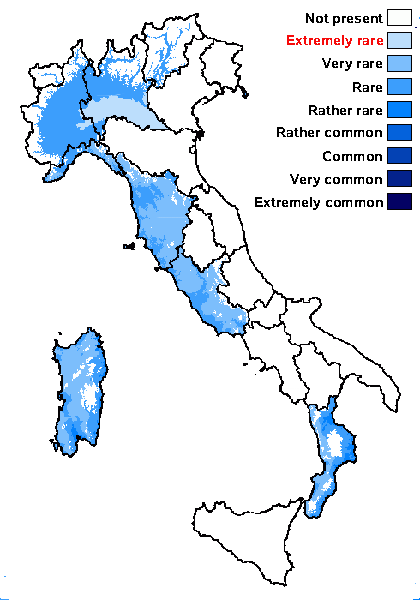
Predictive model
Herbarium samples
Growth form: Crustose
Substrata: rocks
Photobiont: green algae other than Trentepohlia
Reproductive strategy: mainly sexual
Commonnes-rarity: (info)
Alpine belt: absent
Subalpine belt: absent
Oromediterranean belt: absent
Montane belt: absent
Submediterranean belt: rare
Padanian area: extremely rare
Humid submediterranean belt: very rare
Humid mediterranean belt: rare
Dry mediterranean belt: rather rare

Predictive model
| Herbarium samples |
 Index Fungorum
Index Fungorum
 GBIF
GBIF
